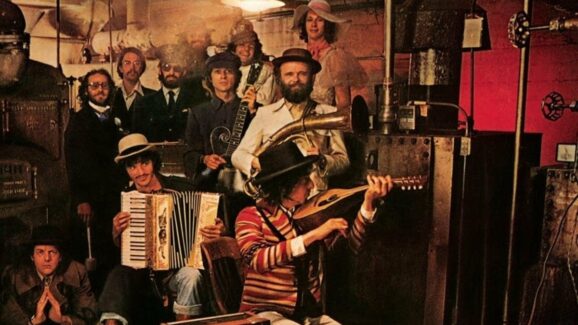 Still in selected theatre runs, Todd Haynes’ unorthodox biopic of Bob Dylan, I’m Not There, is a highly imaginative piece of work, perhaps too imaginative for its own good. A viewer somewhat knowledgeable with Dylan’s history, real or imagined, may be able to impose a sense of logic to the film, but someone only superficially familiar with the Bard’s life may see only a series of often surreal images with little or no continuity. Yet it’s possible I’m Not There will in fact function best as a sort of tabula rasa upon which a viewer can project his or her own individual understanding of Bob Dylan’s life and the times in which he’s lived.
Still in selected theatre runs, Todd Haynes’ unorthodox biopic of Bob Dylan, I’m Not There, is a highly imaginative piece of work, perhaps too imaginative for its own good. A viewer somewhat knowledgeable with Dylan’s history, real or imagined, may be able to impose a sense of logic to the film, but someone only superficially familiar with the Bard’s life may see only a series of often surreal images with little or no continuity. Yet it’s possible I’m Not There will in fact function best as a sort of tabula rasa upon which a viewer can project his or her own individual understanding of Bob Dylan’s life and the times in which he’s lived.
The better versed you are in the Dylan myth, the more nuance you can notice, such as how the segments starring Richard Gere as an inhabitant of the small town of Riddle resemble the iconography of the cover of The Basement Tapes. Yet that perspective has its mythmaking disadvantages too and Haynes falls prey to them, furthering the innuendo concerning Dylan’s relationship with manager Albert Grossman and the real or imagined reaction to Dylan’s electric set at 1965’s Newport Folk Festival.
I’m Not There may ultimately serve its best purpose via one not-so-readily discernible theme within its multi-leveled flow of metaphor: Haynes reminds us of the fundamental source of fascination with Bob Dylan is his music. And in a film dense with symbology, the changes in Dylan’s style reflect the changes in his personae, which in turn mirrors the fundamental purpose of Dylan’s career: his search for identity.
But, just as the Woody Guthrie fanatic (portrayed by an African-American early teen boy, Marcus Carl Franklin) speaks of ‘com-po-site’ identity, Haynes suggests no one of Dylan’s various guises, or styles of music is more valid than another, only that some are more fascinating (the ‘65-‘66 Dylan as brilliantly portrayed by Cate Blanchett) than others (the Christian phase the least colorful).
 The inclusion of certain songs in the soundtrack, then, is significant in itself. The (over) familiar is here in the form of “Like A Rolling Stone” and “Blowin’ in the Wind,” but also the less famous but equally moving, such as “I’ll Keep It with Mine” and “Blind Willie McTell.” Todd Haynes’ piece of cinema proffers the subliminal message that the breadth as well as the depth of Dylan’s songwriting and performing is his most remarkable achievement, not the celebrity that arises from it and often presents obstacles to the creative process (appropriately, toward that end, ‘Bob Dylan’ is depicted as a famous James Dean-like actor).
The inclusion of certain songs in the soundtrack, then, is significant in itself. The (over) familiar is here in the form of “Like A Rolling Stone” and “Blowin’ in the Wind,” but also the less famous but equally moving, such as “I’ll Keep It with Mine” and “Blind Willie McTell.” Todd Haynes’ piece of cinema proffers the subliminal message that the breadth as well as the depth of Dylan’s songwriting and performing is his most remarkable achievement, not the celebrity that arises from it and often presents obstacles to the creative process (appropriately, toward that end, ‘Bob Dylan’ is depicted as a famous James Dean-like actor).
It’s wholly logical, then, to savor the final images of I’m Not There, a full two minutes of sixties era Dylan playing a beautifully complex solo on harmonica. This sequence in itself gives the lie to his use of the instrument as limited novelty and the footage functions as a microcosm of the means by which I’m Not There ultimately undercuts whatever we may take for granted about Bob Dylan.












